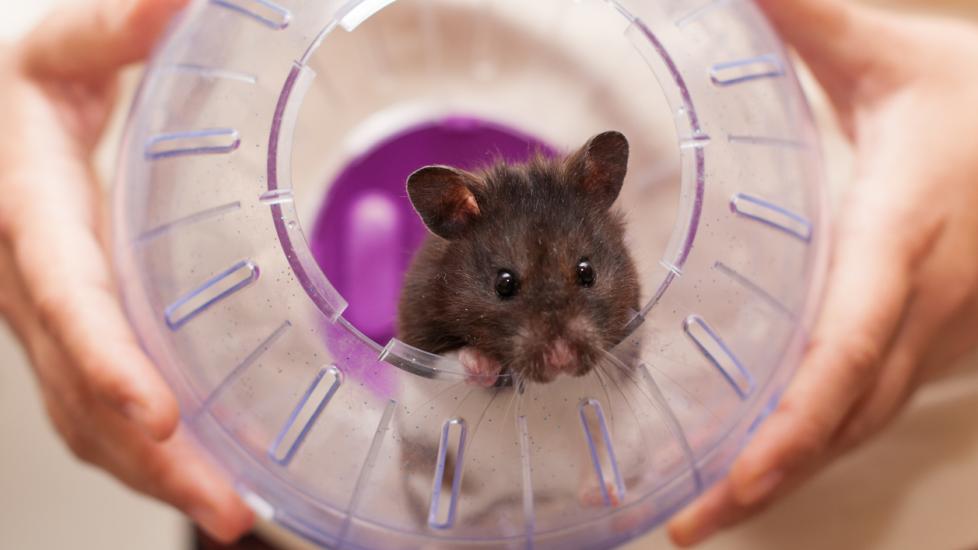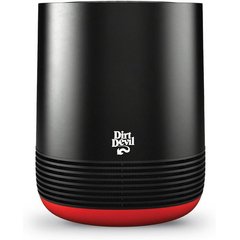Are Hamster Exercise Balls Dangerous?
Hamsters are popular pets because of their small size and quiet demeanor. Within their captive environment, space is limited, so toys that allow safe movement while being confined are ideal. Plastic hamster balls are often used as exercise toys but they can be dangerous to hamsters if used improperly.
How to Use Hamster Exercise Balls Safely
When using a hamster ball, it is important to match the size of the ball to the full-grown size of the hamster. If an exercise ball is too small for the hamster, it can put stress on their spine and become extremely uncomfortable. Additionally, a lighter-colored ball is recommended, as it will not trap as much heat as darker-colored balls, which could contribute to overheating while exercising.
Introducing Your Hamster to Exercise Balls
A gradual introduction to the ball is recommended so your hamster has enough time to explore and become accustomed to the ball. Introduce the ball by placing half of the ball inside the hamster cage with the open side facing up. Placing a treat within the open ball will help entice your hamster to climb inside.
Repeat this over several days so your hamster will gain confidence and trust. When the hamster is comfortably entering and exiting the ball on their own, you can try enclosing the hamster inside the ball. The first few times you do this, include a treat inside the ball so you hamster remains comfortable even when the ball is fully assembled.
Once the hamster is comfortable in an enclosed ball, it is very important to let the hamster choose when and how fast to start the ball rolling. Forcing a hamster to run in the ball by rolling it yourself is never acceptable. Signs that indicate hamsters are afraid may include hyperactivity, compulsive or aggressive behaviors, hair loss, vocalizing, salivation, muscle tremors, or rigidity.
If at any time the hamster seems frightened or anxious, they should be removed from the ball immediately.
Hamster Ball Cleaning Practices
Clean the hamster ball with soap and rinse thoroughly with water before and after every use. Hamsters drop food and will excrete urine and feces inside the ball as they are using it, and stressed hamsters will eliminate more often than normal. This material may accumulate inside the ball and result in a build-up of potentially toxic or infectious material that could cause illness.
You should ensure the ball is well-ventilated. When ventilation slit sizes are too small or there are not enough slits to allow adequate ventilation, heat can build up inside the ball, along with ammonia gas from the excreted urine. This can irritate your hamsters eyes, respiratory tract, and skin.
Other Hamster Ball Safety Precautions
Ensuring that the ball is closed correctly will also prevent injury from accidental falls. Your hamster may fall out of an improperly fastened opening as the ball is rolling. This could cause lacerations, bruises, broken bones, or brain injuries.
It’s also essential to prevent your hamster from accessing stairs while in the ball. The supervised exercise area should be barricaded to prevent accidental rolling down steps or stairs. This type of fall will not only cause the hamster distress and may result in serious injury or death.
A time limit is needed when allowing the hamster to exercise in a ball. This will ensure your hamster doesn’t get too stressed or tired from lengthy confinement or overexertion. Begin with a few minutes (3-5) at a time, then increase by a few minutes if there are no signs of fatigue or distress, up to 15 minutes total. Stopping to rest or panting would be indications your hamster has had enough activity and should be removed immediately.
Hamster Exercise Ball Size
The ideal hamster ball size depends on how large your hamster is and their breed:
-
Syrian hamsters: minimum of 8 inches and a maximum of 12 inches in diameter
-
Roborovski (Robo) or Chinese hamsters: 5 inches in diameter
-
Dwarf hamsters: 7 inches in diameter
The gender of the hamster will also affect the size of the hamster ball since females tend to be larger than males.
Recommended Products
Hamster Ball Alternatives
The Kaytee Critter Cruiser is a pet-powered exercise car for hamsters. It has an adjustable racing wheel with three settings to allow the car to be stationary, mobile, or attached to a Hamtrac system for more controlled movement.
The Kaytee Hamtrac Exercise Loop is a circular exercise track that works with enclosed exercise toys to allow safer movement and explorative playtime without roaming freely. An assembled track measures 25 inches in diameter.
The Oxbow Enriched Life 2 in 1 Fitness Ball is a toy that can be used in multiple ways. It has a freestanding base that can attach to the habitat itself allowing tethered exercise. The ball can also be detached from the base for supervised unrestricted use.
A playpen may be created using a bathtub with a blanket covering the slick bottom and toys for enriched play while keeping hamsters safely out of harm’s way. Care must be taken to avoid interference from other animals or children as accidental injuries could happen if left together unsupervised.
Featured Image: iStock.com/vladimirzahariev




